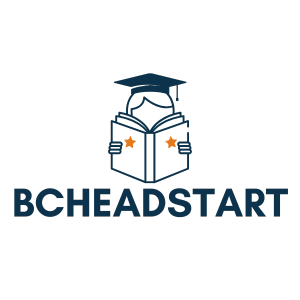In a world where traditional education often feels like a game of chance, competency-based education (CBE) steps up as the ultimate strategy for success. Imagine a classroom where students don’t just sit through lectures but actually master skills at their own pace. No more cramming for exams or wondering why algebra didn’t come with a user manual—CBE focuses on what really matters: real-world competence.
Table of Contents
ToggleOverview of Competency-Based Education
Competency-based education (CBE) transforms the learning experience by focusing on students mastering specific skills at their own pace. This model prioritizes practical applications and real-world competencies.
Definition of Competency-Based Education
Competency-based education centers on students demonstrating mastery of specific knowledge and skills. It emphasizes individualized learning paths, allowing students to progress upon mastering competencies. Each educational program consists of well-defined learning outcomes that articulate what students must know and be able to do. This approach contrasts with traditional methods that often focus on time spent in class rather than competencies achieved.
Key Principles and Goals
Key principles guide the framework of competency-based education. Flexibility in learning allows students to progress according to their unique learning speeds, fostering a tailored educational experience. Assessment for competency frequently occurs through practical evaluations, ensuring that real-world applications support learning outcomes. The overarching goal remains to prepare students for success in their careers, equipping them with relevant skills that employers seek in the workforce. By focusing on mastery, CBE cultivates a deeper understanding of subject matter, promoting lifelong learning habits.
Benefits of Competency-Based Education

Competency-based education (CBE) offers multiple advantages that enhance the learning journey for students, focusing on real-world relevance and practical skills.
Student-Centered Learning
Student-centered learning is a cornerstone of CBE. This approach allows individuals to take ownership of their educational experience. Learners progress based on their mastery of competencies instead of adhering to a fixed schedule. In a CBE environment, students engage with material that matches their interests and career goals. Active participation promotes motivation and retention of knowledge. Educators guide learners, providing support tailored to unique needs, ensuring growth and understanding in a more personalized manner.
Flexibility and Personalization
Flexibility stands as a significant benefit in CBE. Students can learn at their own pace, allowing them to tackle complex topics without the pressure of traditional timelines. Personalized learning paths cater to distinct learning styles and schedules, accommodating work or personal commitments. Access to diverse resources enhances the learning experience. Immediate feedback on assessments helps identify areas needing improvement, fostering continuous progress. This adaptability equips students with competencies relevant to their careers, preparing them for success in their chosen fields.
Challenges in Implementing Competency-Based Education
Implementing competency-based education (CBE) presents several challenges that institutions must navigate. These barriers can hinder effective implementation and may affect overall efficacy.
Institutional Barriers
Institutional resistance often arises when transitioning to CBE. Many existing educational structures prioritize traditional models, creating inertia that complicates reform efforts. Faculty members may struggle with shifts in teaching methodologies, leading to reluctance in adopting new approaches. Additionally, limited resources can impede the development of personalized learning pathways. Administrative support is crucial; without it, the necessary investment in technology and training becomes difficult. A supportive climate fosters collaboration among departments, enhancing the implementation process. Ultimately, addressing these institutional barriers is vital for the successful adoption of CBE.
Assessment and Accreditation Issues
Assessment methods require significant adaptation in CBE. Traditional exams fall short in measuring student mastery effectively, prompting institutions to explore alternative evaluation techniques. Formative assessments, performance-based evaluations, and project-based tasks present more effective measures for gauging student competency. Accreditation bodies often lack clear guidelines for CBE programs, creating uncertainty for institutions adopting this model. Navigating these accreditation requirements can slow down implementation and add complexity to program design. Ongoing dialogue with accrediting organizations helps ensure compliance while maintaining educational integrity. Adjusting assessments and collaborating with accrediting bodies play critical roles in overcoming these challenges.
Case Studies of Competency-Based Education
Competency-based education (CBE) has seen successful implementations across various institutions, showcasing its effectiveness in enhancing student learning and outcomes.
Successful Implementations
Western Governors University (WGU) exemplifies a successful CBE model. This online institution emphasizes mastery through personalized learning paths, allowing students to progress upon mastering competencies. Students often complete their degrees faster than traditional timelines, with many finishing within 18 months. Another case is the University of Wisconsin System, which launched the Flexible Option program. This initiative offers competency-based degrees tailored to adult learners, emphasizing practical skills. Recent data indicates over 1,000 students enrolled in the program, showcasing growing interest in CBE. These institutions demonstrate its potential in meeting diverse educational needs.
Lessons Learned from Challenges Faced
Institutions implementing CBE encountered significant challenges, particularly regarding faculty buy-in. Resistance from educators accustomed to traditional formats hindered progress in some cases. Financial constraints also posed obstacles, limiting necessary technology and resources. A study by the Council for Adult and Experiential Learning revealed that inadequate training for faculty impacted the effectiveness of CBE strategies. Accreditation complexities further complicated implementation; unclear guidelines created uncertainty. Continuous communication with accrediting bodies fostered clarity, helping institutions navigate these challenges. Adaptability proved crucial, prompting institutions to refine CBE methods based on real-world experiences and feedback.
Future of Competency-Based Education
Competency-based education (CBE) is poised for significant growth and transformation. Emerging trends and innovations are reshaping the educational landscape.
Trends and Innovations
Data analytics is becoming integral in CBE, offering insights into student progress and mastery levels. Personalized learning technologies allow for tailored educational experiences, closely aligning content with individual learner needs. Digital platforms facilitate access to learning resources, enhancing flexibility for students. Increasing partnerships with employers provide real-world challenges that are embedded in learning pathways. As institutions embrace micro-credentialing, students can earn specific competencies recognized by employers, thereby emphasizing practical skills.
Potential Impact on Education Systems
Adopting CBE could fundamentally alter traditional education systems, emphasizing mastery over time spent in class. Increased student engagement often leads to overall improved learning outcomes. Flexibility in course scheduling supports diverse learner populations, making education more inclusive. Faculty roles likely shift towards mentorship, focusing on guiding students through personalized journeys. Educational institutions may see enhanced alignment with workforce demands, ultimately producing graduates with competencies desired by employers.
Competency-based education represents a significant shift in how learning is approached. By prioritizing mastery and real-world skills over traditional metrics like time spent in class, it aligns education with the needs of today’s workforce. This model not only fosters a deeper understanding of subjects but also encourages lifelong learning.
As educational institutions continue to explore and implement CBE, the focus will be on overcoming existing challenges. Adaptability and innovation will play crucial roles in refining these educational methods. With the right support and resources, CBE has the potential to revolutionize how students engage with their education and prepare for successful careers.

